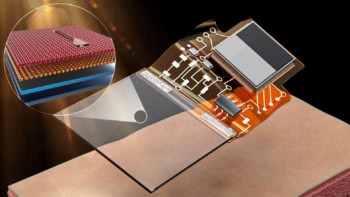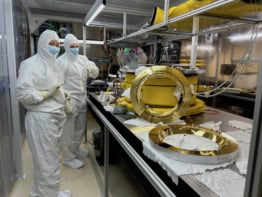Irrigation systems in dry countries could benefit from a new humidity detector that is much more sensitive than existing devices. The device developed by Juan Bisquert and colleagues at the Universitat Jaume I in Spain is based on indium tin oxide, which is widely used in the semiconductor industry. Both cheap and durable, the sensor could improve crop yields and save water – a precious resource for both agriculture and tourism (F Fabregat-Santiago et al 2002 Appl. Phys. Lett. 80 2785).

Many irrigation systems automatically water crops at regular intervals, but these systems can be inefficient in very dry climates because they do not account for unexpected downpours or unusually hot spells. Humidity detectors would allow such systems to maintain a certain level of moisture in the soil, but conventional devices are unsuitable for arid regions because they are only sensitive to high levels of humidity. They also tend to be expensive.
In an attempt to solve this problem, Juan Bisquert and co-workers focused on indium-doped tin oxide (ITO), a ‘degenerate’ semiconductor with conductance characteristics similar to that of a metal. This material is widely used as a conducting substrate in the semiconductor industry and glass sheets coated with ITO are readily available.
Bisquert and colleagues cut a centimetre-sized square from such a sheet, and removed a strip of the ITO layer. This left two ITO regions – to which they attached electrodes – separated by a channel 500 micrometres wide. The device was then buried in dry soil, so that soil particles filled the channel, and connected to a power supply. The researchers then recorded the resistance of the soil as they added water to it, and as it dried out.
As the team varied the soil humidity between 5% and 10%, they found that the resistance changed by two orders of magnitude, showing that the device is very sensitive to low levels of water. The researchers were able to reproduce their results adequately, even when they adjusted the acidity of the soil to simulate the effects of chemical fertilizers.
Although the sensitivity of the device arises from the electrical properties of ITO, it works on the same principles as other humidity detectors: when water molecules adsorb onto the surface of the sensor, some of them split into H3O+ and OH– ions. Conduction takes place when a H3O+ ion donates a proton to a neighbouring water molecule, which releases another proton, and so on. Conductivity therefore increases with rising moisture levels.
Bisquert and colleagues are pleased with their device, but caution that it has only been demonstrated in the lab. “We now need to check that the readings correlate well with the water needs of crops over a period of time,” Bisquert told PhysicsWeb. “This will be the crucial step, because fabrication is straightforward.”



